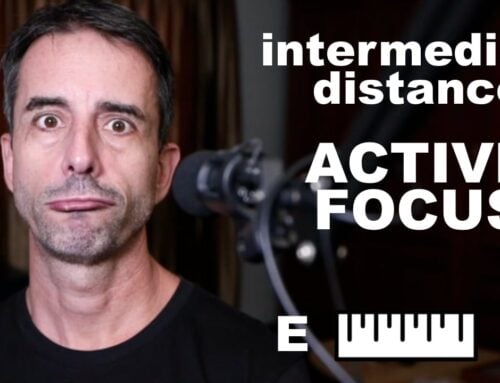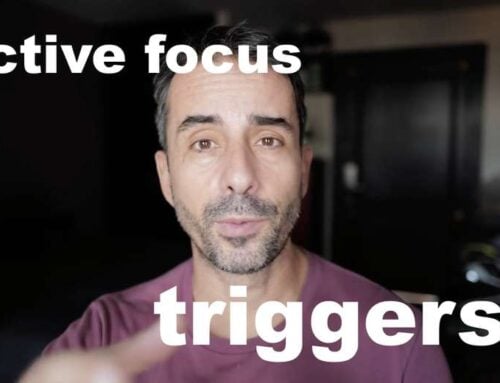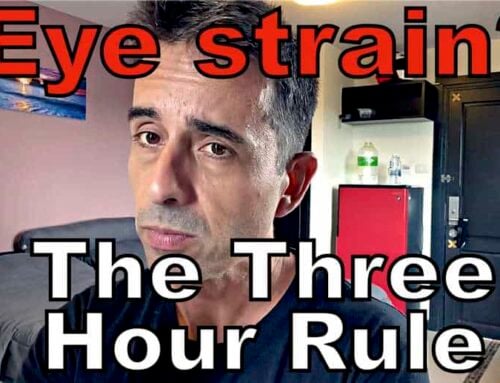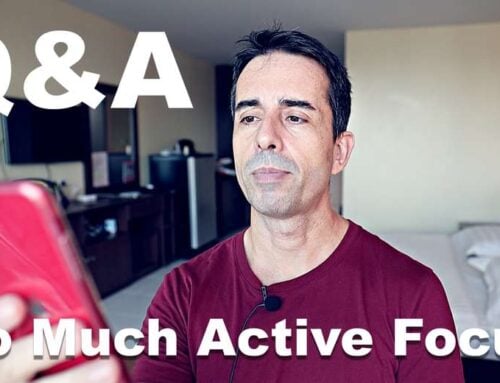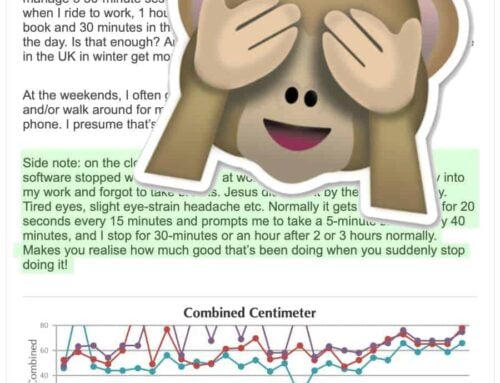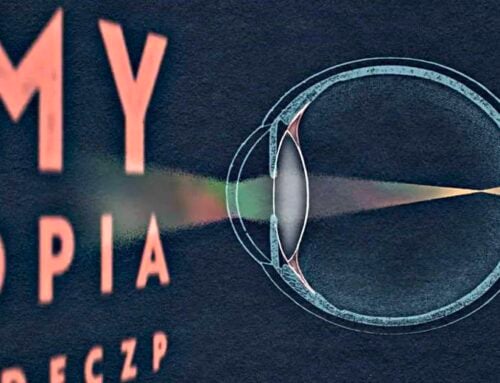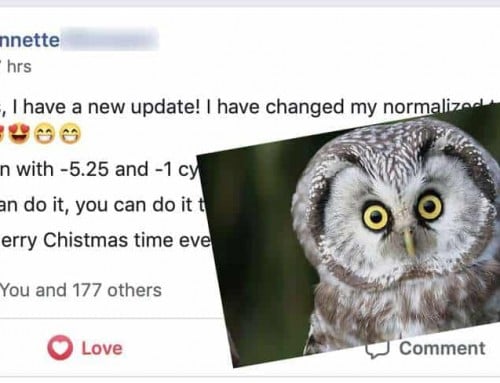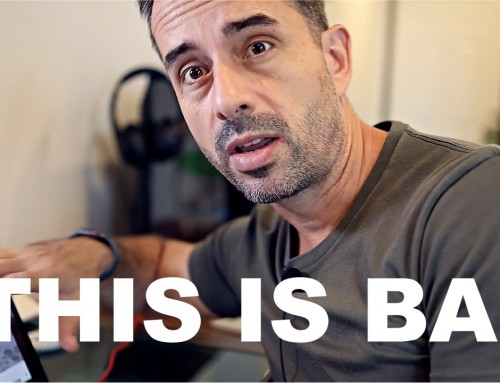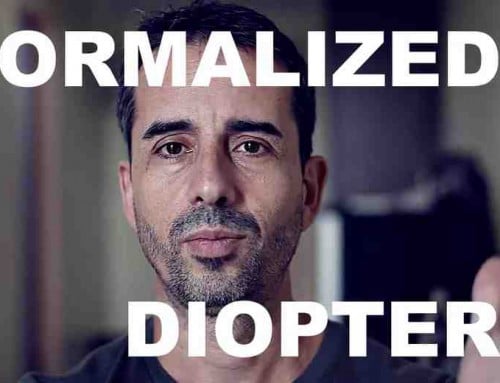Glasses and contact lenses are prescription only for good reason – it can be less than ideal for your eyesight, general well being and even safety, to pick the wrong glasses!
Of course the mainstream paradigm of giving you the maximum possible prescription is also no good for your eyes. So you have no choice but to venture out and learn about how to get a healthy prescription.
It’s a bit of a learning experience, which we will look at here.
Cindi writes in the forum:
![]() Things were going great in terms of adjusting to slightly reduced prescriptions (started that before this program) and reading without glasses (even with high astigmatism), but now my eyes are hurting and I’m getting headaches. I think I may be confusing my brain with too many prescriptions, and the reading without any astigmatism correction seems like a bad idea.”
Things were going great in terms of adjusting to slightly reduced prescriptions (started that before this program) and reading without glasses (even with high astigmatism), but now my eyes are hurting and I’m getting headaches. I think I may be confusing my brain with too many prescriptions, and the reading without any astigmatism correction seems like a bad idea.”
—
This reveals a flaw that continues to persist on the site. There isn’t quite enough of a single location overview of key points of the Web course. You jump right in and if you follow everything closely, it works well.
But if you were experimenting previously, or deviate, or get curious and try other things, you may end up having a less than perfect experience.
I can identify with this since I would have been one of those latter types.
Here is what I explained in the forum, about initial prescriptions:
![]() There is admittedly a bit of a chicken and egg problem there. Here is what I would suggest, about prescriptions:
There is admittedly a bit of a chicken and egg problem there. Here is what I would suggest, about prescriptions:
Initial prescription needs are unpredictable. You get the first differential in particular, it’s a guess. Especially how your eyes will respond, how long they will take to adapt, how quickly they might improve (sometimes ciliary based myopia can reduce over a diopter in a matter of weeks in higher myopes). So we tend to take that first differential and then not touch prescriptions for a month. Prescription changes are *very* hard on the system as a whole, as the eye and brain isn’t excepting / designed for arbitrary changes in focal plane.
The less prescription change based disruption, the better for you.
After the first month we have some data, and then it makes sense to figure out a normalized (reduced distance) prescription.
Then we leave that alone again for at least 1-2 months before looking at adjustments.
You have (very roughly speaking) a diopter of margin for improvement per year. That’s a really wide range of an average. Considering that relatively small amount of change, it makes sense to not disrupt with a lot of prescription changes.
All that said, reductions past the first two tend to work perfectly well in 0.25 diopter decrements.”
—
Prescription use is very central to the premise of myopia rehabilitation, and correct application is going to define your experience. I will make sure we will get a bit more of a roadmap and FAQs online to make the initial learning curve even more predictable.
I do hope you are enjoying the site, and getting helpful insights for your eyesight.
Cheers,
– Jake




